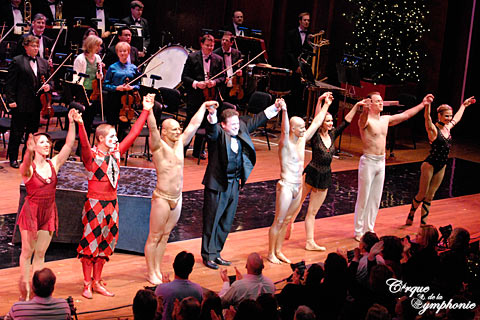by Daniel Hathaway
Beginning on Saturday at 2:30, The Hingetown Jazz Festival showcases both skilled veterans who have graced the stage for years as well as young and upcoming talents who are redefining the jazz landscape in Northeast Ohio. Support local businesses while immersing yourself in Cleveland’s rich jazz scene. Sponsored by the Local 4 Music Fund, this free festival takes place at Transformer Station, Bop Stop, and Jukebox. Click here for more information.
And on Saturday and Sunday at 7 pm, Cirque de la Symphonie joins the Akron Symphony Orchestra, Lucas Waldin, conductor, and vocalists Morgan James and Hugh Panaro at the Blossom Music Center. Read a preview article here. Tickets available online.
Elsewhere, Franz Welser-Möst and The Cleveland Orchestra continue their European Tour in Switzerland with a concert on Sunday at the Lucerne Festival that includes Tchaikovsky’s Fifth Symphony and Robert Schumann’s Piano Concerto with Víkingur Ólafsson.
WEEKEND ALMANAC:
August 30 – by Jarrett Hoffman
In the space between composition and performance lies improvisation, a skill which brought special renown to organist and composer Piet Kee, who was born on August 30, 1927 in Zaanstad in the Netherlands. For him, kicking off an international performing career was as simple as winning first prize at the Haarlem International Improvisation Competition three years in a row, 1953-1955. Watch footage of a short improvisation of his on the 1738 Christian Müller organ in St. Bavo in Haarlem here.
August 31 –
Albert Riemenschneider was born in Berea on this date in 1878. Riemenschneider’s father was president of German Wallace College, which later became Baldwin-Wallace College, then Baldwin Wallace University (dropping a hyphen on the way). Albert was offered the directorship of the music department in 1898 while still an undergraduate, and went on to found the Baldwin-Wallace Bach Festival in 1932, modeled after the one in Bethlehem, Pennsylvania. That became a Riemenschneider family enterprise with the agenda of allowing students to participate in each of J.S. Bach’s four great choral works — the St. Matthew and St. John Passions, the Mass in b-minor, and the Christmas Oratorio — during their undergraduate years.
His most well-known contribution to Bach studies was his publication of the 371 Harmonized Chorales in 1941 (along with 69 chorales with figured bass), a collection that had previously been published by Bach’s sons and others, but which has remained in publication and popularity.
Riemenschneider’s wife, Selma, was instrumental in founding the Baldwin Wallace Bach Institute with her 1951 gift of Albert’s books and manuscripts to the College (he died in 1940).
Tom Riemenschneider and Laura Kenelly considered his legacy in a paper on the 75th anniversary of the Festival. Click here to watch a video featuring the 2016 Matthew-Passion performance with Rufus Müller as Evangelist, Dashon Burton as Christus, and soloists Yulia Van Doren, Luthien Brackett, Matthew Anderson, and Jason Steigerwalt, with Dirk Garner conducting.
September 1 – by Jarrett Hoffman
British composer Samuel Coleridge-Taylor, born on September 1, is recently and deservedly gaining more attention from programmers, musicians, and audiences alike. A great way to immerse yourself in his music is the first entry in the Catalyst Quartet’s Uncovered series.
Read our review here, and listen to the album here, which includes the Quintet in g for piano and strings, the five Fantasiestücke for string quartet, and the Quintet in f-sharp for clarinet and strings.
September 2 – by Stephanie Manning
The “dapper and acerbic” Rudolf Bing, the famed general manager of the Metropolitan Opera, who oversaw the company’s move to Lincoln Center in 1963, and died on this date in 1997, never shied away from conflict, even with international opera stars.
In 1958, he canceled the contract of soprano Maria Callas over a disagreement, but spent years convincing her to come back. She eventually returned to the Met seven years later in the title role of Tosca, which would mark the end of the 42-year-old soprano’s stage career.
In a review of the performance, New York Times critic Harold Schoenberg described New York City’s excitement over the return of Callas (pictured below):
Hours before the curtain went up, the street outside the opera house looked like one of the circles of Dante’s Inferno. […] The picketers were being jostled by citizens pleading for tickets, at any price. Some bore plaintive signs: ‘A single ticket, please.’
Another figure Bing clashed with was Cleveland Orchestra conductor George Szell, who left the Met in 1954 after an argument over his contract. Someone commented afterwards that Szell was his own worst enemy, to which Bing famously replied: “Not while I’m alive.”
Despite his tenuous relationships with some well-known figures, Bing was also renowned for integrating the Met’s artist roster and nurturing the careers of singers such as Leontyne Price, who became one of the first African American singers to perform for the company in a leading role. In 1950, while facing some backlash over announcing he would hire singers regardless of race, Bing wrote to a disgruntled subscriber: “I am afraid I cannot agree with you that as a matter of principle, Negro singers should be excluded. This is not what America and her allies have been fighting for.”




